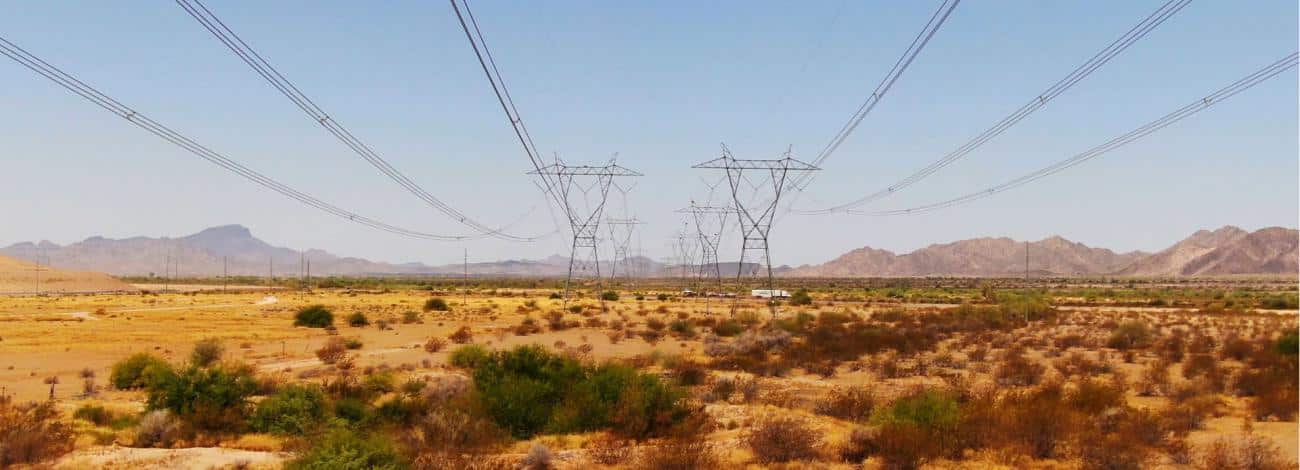
Insights Into the Largest Clean Energy Project in History
The planet is on its way to overcoming the climate crisis with the help of massive governmental investments and environmental advocacy. In this article, we’ll discuss how one of the biggest projects in renewable power history came to fruition, although recognizing its impacts requires a critical eye. How is a landmark clean energy deal bringing equal parts optimism and distress? Here are the nuances and why the plan is more complex than it seems:
An Introduction to SunZia’s Transmission Lines
Numerous investors banded together to support SunZia’s parent company, Pattern Energy, in building 553 miles of power lines from New Mexico to California, through Arizona. The job privately sourced a whopping $10 billion to produce its promised 3,515 megawatts of clean energy to 3 million homes in the American West by the Biden administration’s deadline of 2035.
These are some of the mitigation efforts detailed in Pattern Energy’s 2023 Sustainability Report:
- Planting thousands of agave plants to help Bat Conservation International
- Expanding the Sevilleta National Wildlife Refuge
- Collaborating with the Arizona Game and Fish Department for invasive species removal and revegetation
- Invest in sandhill crane flight pattern research
The vision has been in the works since 2006 and has gone through arduous reviews and approval from the U.S. Bureau of Land Management (BLM). The infrastructure will connect to gigantic wind farms, though smaller projects are just as viable as these when considering future wind adoption. The transmission’s mileage is impressive, yet intimidating, as workforces will have to navigate communities, resources and cultural zones — or will they?
Witnessing Renewable Energy at Its Peak
The best part about this initiative is how many people it will reach. Millions will experience clean energy for the first time. The luxury will seep into other parts of the nation — and the world. This is necessary for reshaping how governments approve and permit renewable energy jobs. It should not have taken over a decade to approve SunZia’s plans, but it did. The climate crisis cannot afford these stopgaps and the advantage of this infrastructure is it will highlight necessary systemic changes.
Job openings are another boon. Around 2,000 people will receive employment in the green power sector, developing new skills and potentially remaining within it as opportunities expand across the country. Around 100 of these individuals will stay permanently on the job. Massive undertakings like this are perfect training opportunities to upskill a world desperate for renewable energy expertise.
Though these employment numbers may not seem impressive, they assert how economically beneficial similar projects will be in the future. It will inject over $20.5 billion into New Mexico and Arizona’s economies once everything goes live. For two states covered in rural communities, SunZia could be the catalyst needed to ascend into modernization.
The Rising Tension With Native Tribes
This groundbreaking green energy plan is antithetical to some sustainable development goals. Social justice and equity are at the forefront of many climate crisis conversations, as it disproportionately impacts minority and underserved populations.
Additionally, construction ignores the preservation of biodiversity and natural resources. Jobs like Solar Star leveraged disturbed ground for its project to mitigate land disruption. Those involved claimed to have audited the route and consulted with populations, though some argue the opposite.
This is why the San Carlos Apache and Tohono O’odham Nation Tribes in Arizona are suing the U.S. Department of the Interior and the BLM for negligence of several acts. They include the Administrative Procedure Act and the National Historic Preservation Act, among others. Because the SunZia mission has been attempting to launch for over a decade, this isn’t the first time tribes and others in the region have vocalized their urgency in protecting these areas.
SunZia’s massive transmission line is going straight through 50 miles of San Pedro Valley land regulatory agencies should protect. The goal is to stop construction long enough to find alternative solutions and maintain the environmental sanctity of the land. However, leaders from each side are in discussions now to discuss strategies.
The Grid’s Developing Capabilities
The tribal lawsuits are one barrier revealing potential oversights. However, other obstacles may be even more practical. Many wonder if the U.S. power grid, which is currently undergoing modernization, can support a project of this scale. Now is the perfect time to prove it can handle sustainable, clean energy.
Managing the consistency of wind power relies on energy storage, which must be compatible with the grid to charge and distribute smartly. This even matters in the field as construction workers utilize temporary power for installation.
Pattern Energy is known for its work in distributed energy sources and it’s possible to incorporate these along SunZia’s route. The ability of a modernizing grid to handle the intensity remains in question. Still, the U.S. has the technological know-how to execute SunZia’s vision, while bolstering the resilience and energetic potential of a grid citizens have lost faith in.
There are also grid interference concerns. Reports from 2013 evaluations suggest the U.S. Defense Department worries the power lines at capacity could disrupt military operations, air services and critical radar detection systems. Each of these is something to consider of a project this size.
Is Greener Always Better?
Sustainable initiatives will help humans combat climate change, but each project must receive a critical analysis. Though the energy production sounds nice on paper, some oversights show how intricate green expansion can be when digging deeper into the issue. Eco-friendliness is only beneficial if participants are attentive, careful and collaborative with those it will impact.
SunZia’s intentions pave the way for 100% clean energy access in the future. Still, these debates must teach organizations to consider the big picture when breaking ground for the next big climate-focused project. Everyone must have agency when researching these monumental headlines to offer productive feedback and do the next job better.


Post a comment